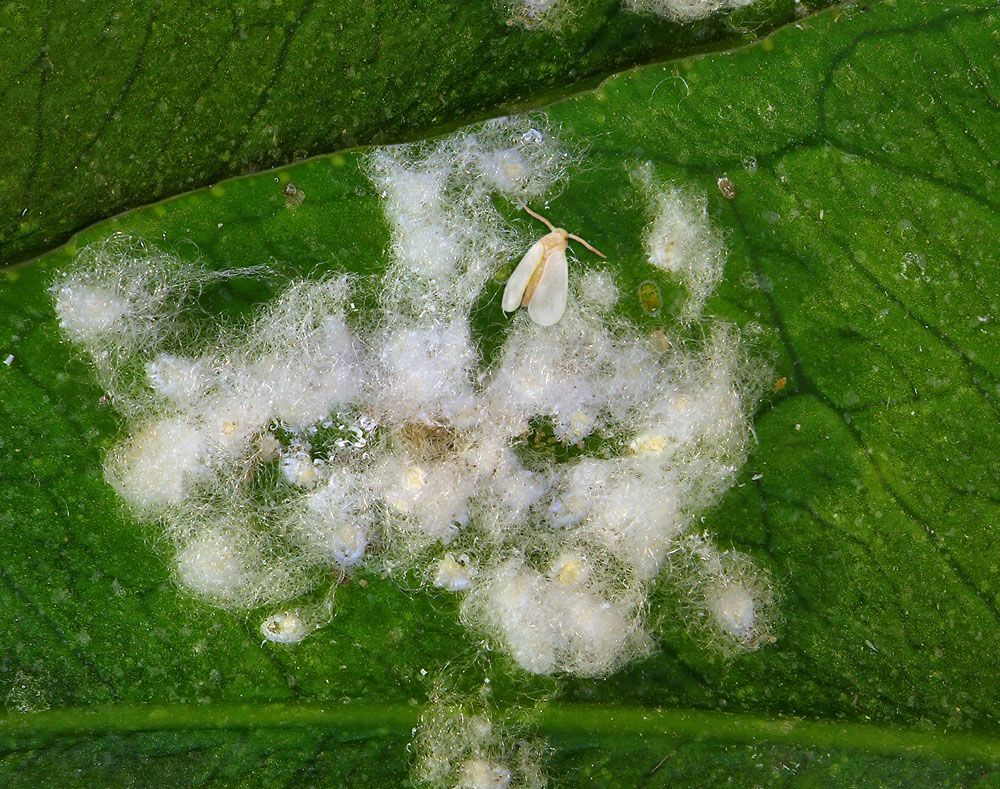
Woolly Whitefly – Aleurothrius flaccosus
Woolly Whitefly – Aleurothriusflaccosus
Common Name: Woolly Whitefly
Latin Name: Aleurothriusflaccosus
Appearance:
- Woolly Whitefly insects have wingspans that are little, around 8 mm long. They appear like tiny moths and are coated in white, fuzzy wax. When seen in high numbers, whitefly might resemble wool or fluff that creates a layer beneath the leaves of host plants. The wax deposit can occasionally cause black mold to form, which can invite subsequent bacterial infections.
- Whitefly pupae resemble scale insects, which appear as flat discs attached beneath the foliage. They are immobile, much like a scale.
- Whitefly eggs are small and golden and may be discovered under the host’s leaves. The eggs of whiteflies are deposited in a circular pattern.
Damages caused by Woolly Whitefly:
Woolly whiteflies drain phloem sap, causing leaves to droop and drop when numbers are high.Honeydew droplets gather dust and promote the formation of sooty mold; extensive infestations with copious amounts of honeydew can result in the blackening of whole trees. This inhibits photosynthesis, resulting in smaller fruit. The fruit can also be contaminated by honeydew and sooty mold. Although this contamination may be washed away at the packing shed, the harvest of infected orchards is hindered, and harvest teams are unwilling to collect significantly contaminated fruit.
Life history and habits:
The eggs are placed on the underside of fully-developed leaves and are unique to the species. They are linked to the leaf by a stalk, are tiny and sausage-shaped, and are placed in circles or semicircles. Typically, these egg circles are encircled by a thin coating of waxy scales. When deposited initially, the eggs are white but change to brown with age. The eggs hatch in 4 to 12 days, with some eggs overwintering. A female will generally lay up to 200 eggs. Woolly whiteflies need around 21 days to complete their life cycle in warm conditions. Adults will emerge in March or April after overwintering. These will be the first of five to six generations of flights.
